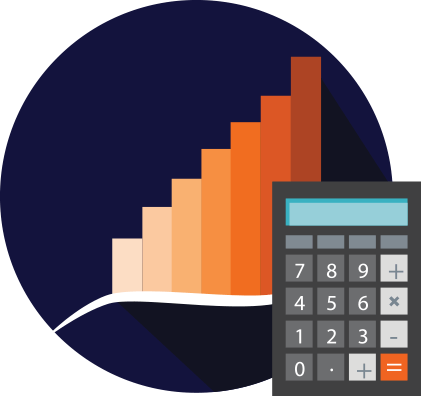One of the best ways to save for the future is to take advantage of retirement accounts designed to encourage long-term investing. Using an Individual Retirement Account (IRA) can be one way to reap some tax advantages while building wealth.
When it comes to Traditional vs. Roth IRA, though, which should you choose? Let’s take a look.
Traditional vs. Roth IRA: Tax Benefits
- Traditional IRA: With a traditional IRA, you make contributions with after-tax dollars. This reduces your taxable income today, so you have a lower tax bill now. Later, when you withdraw money from your Traditional IRA, you have to pay taxes at your regular rate.
- Roth IRA: Rather than getting a tax deduction today, you make contributions to a Roth IRA with after-tax dollars. So, even though you don’t see a lower tax liability today, you get a benefit for the future. Your money grows tax-free in your Roth and you won’t be taxed on the money when you withdraw it later.
Traditional vs. Roth IRA Basics
Similarities between Traditional and Roth IRAs
Before you begin investing for retirement, it’s a good idea to know how these accounts are similar. Both allow you to hold a variety of assets, depending on your custodian.
For example, as long as you follow the right procedure, you can hold gold, real estate, businesses, and other alternative assets in an IRA — in addition to stocks and bonds.
Other items to note include:
- You’re not supposed to access the money in your IRA until you reach age 59 1/2. If you get it earlier, you could end up paying a penalty.
- Anyone can open an IRA, as long as they have earned income.
- It’s possible to contribute up to $6,000 in IRAs for 2021. The IRS changes the contribution amount each year, so double-check. This is a combination of contributions, so if you have both Traditional and Roth IRAs, your total contributions can’t exceed $6,000.
- For those over the age of 50, it’s possible to make a catch-up contribution of $1,000.
Differences between Traditional and Roth IRAs
There are some important differences to keep in mind when you’re considering the question of a Traditional vs. Roth IRA.
- The Roth IRA comes with an income limitation. If you make above a certain threshold, you can’t contribute to a Roth IRA (although you could potentially use a backdoor Roth IRA).
- Because the Roth IRA is funded with after-tax dollars, you can actually withdraw your contributions anytime, penalty-free. You do have a penalty if you withdraw the earnings before age 59 1/2. Some people like a Roth IRA as an alternative emergency fund.
- There are some rules about getting at your earnings with a Roth IRA. In general, the Roth needs to be established for at least five years before you can take earnings penalty-free, even if you can take out the contributions.
- With a Traditional IRA, whether you can deduct your contributions can be affected by your income, as well as whether you (or your spouse) have a retirement plan at work.
- A Traditional IRA comes with required minimum distributions (RMDs) when you reach age 72. You’ll be required to take a certain amount of money each year, and that can impact your tax situation.
Traditional vs. Roth IRA: Which Should You Choose?
Once you know you want to save a little extra in an IRA, you can decide which type of IRA is likely to work best for you.
First of all, you need to determine if you’re eligible to contribute to a Roth IRA in the first place. Once you know that you can contribute, you need to decide whether it makes sense for you.
For some investors, the idea of a Roth IRA appeals because it can provide tax-free income later on. If you think that taxes will go up in the future, or if you’re concerned about your tax bracket, a Roth IRA can make sense. Additionally, when you think of how to withdraw from your accounts, having a Roth IRA for later can be attractive. Some find that drawing down a Traditional IRA to avoid minimums and saving the Roth for tax-free income makes sense.
On the other hand, though, you might expect to be in a lower tax bracket during retirement. Or perhaps you feel like you could benefit from the tax deduction now. In that case, it might be more attractive to use a Traditional IRA.
It’s also possible to invest in both, depending on where you’re at in life. You can also invest in both at the same time if you think that it can work as a hedging strategy to have both types of accounts.
Carefully consider your individual goals and needs and figure out what’s likely to work best for you. Then, start investing.

